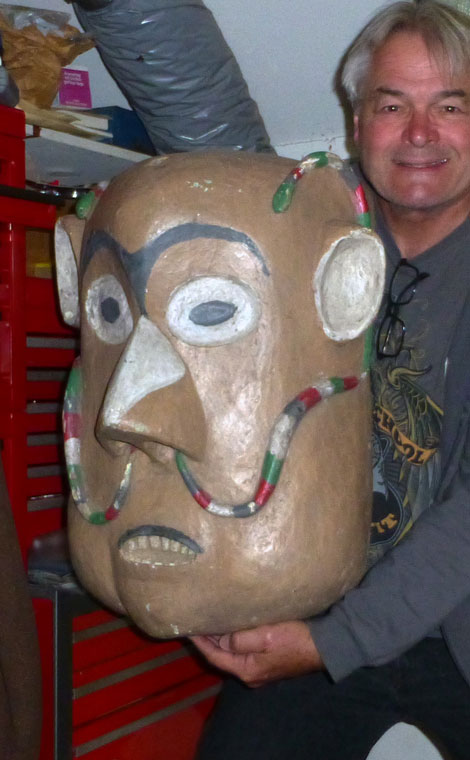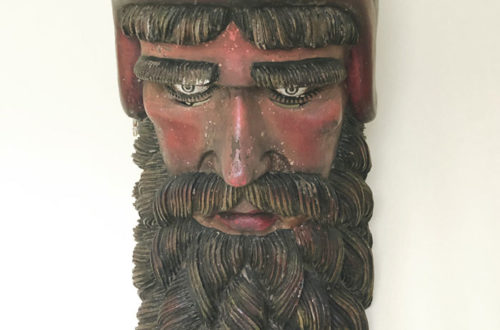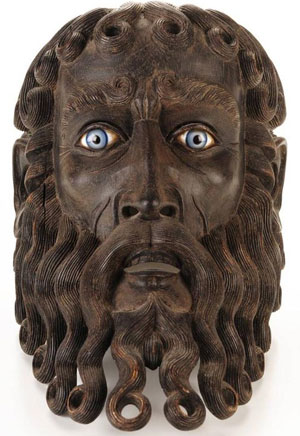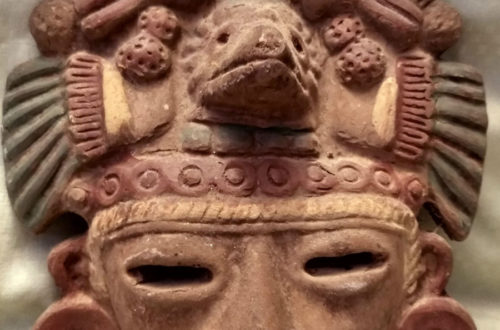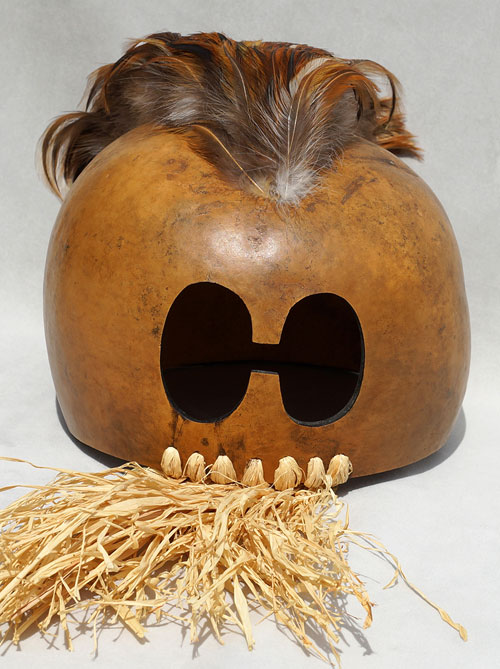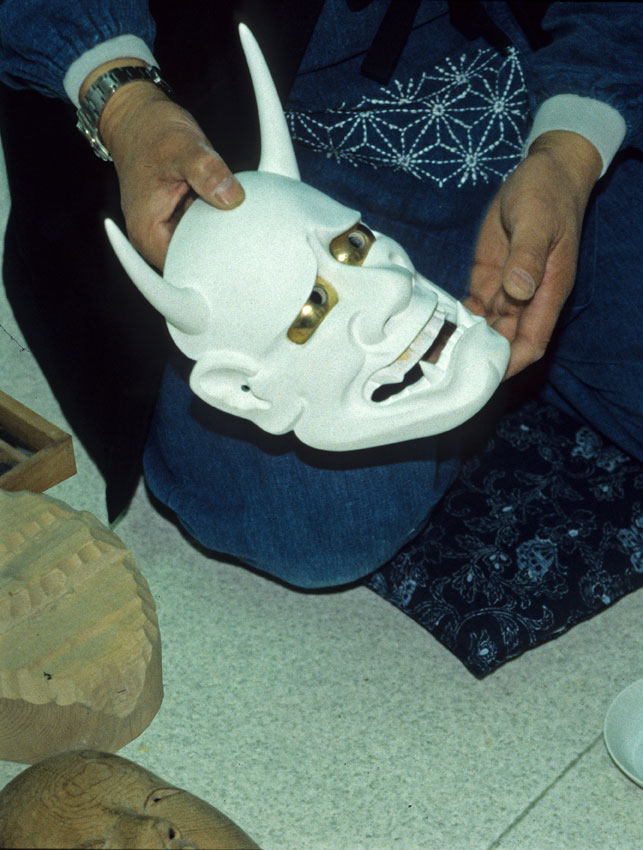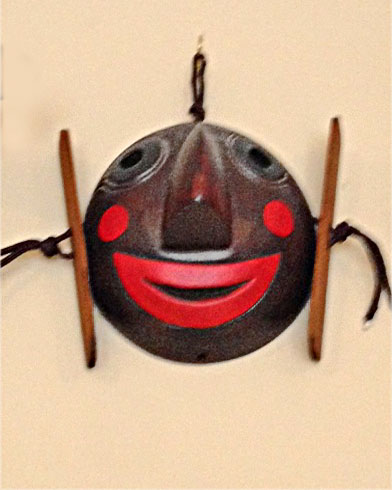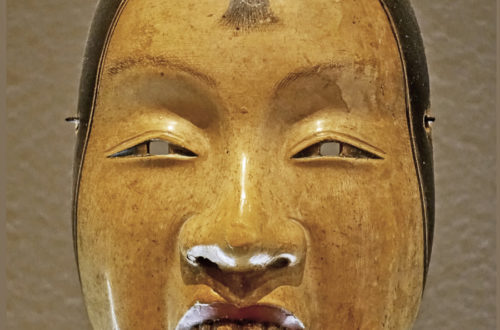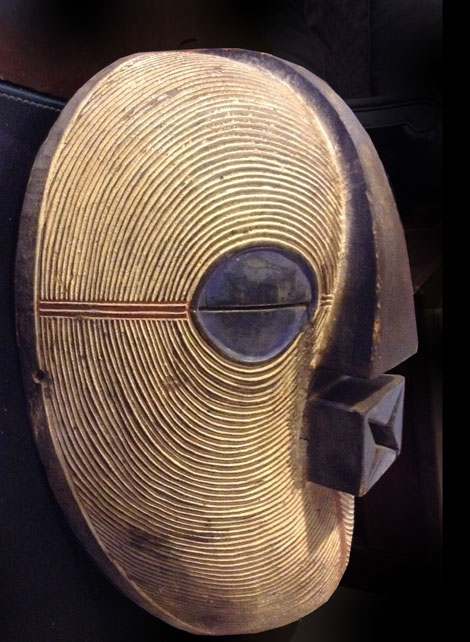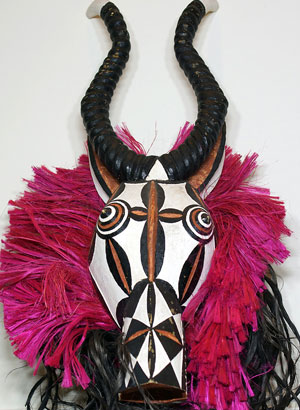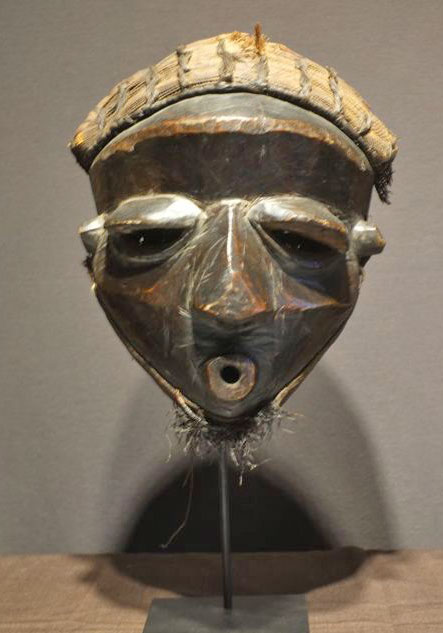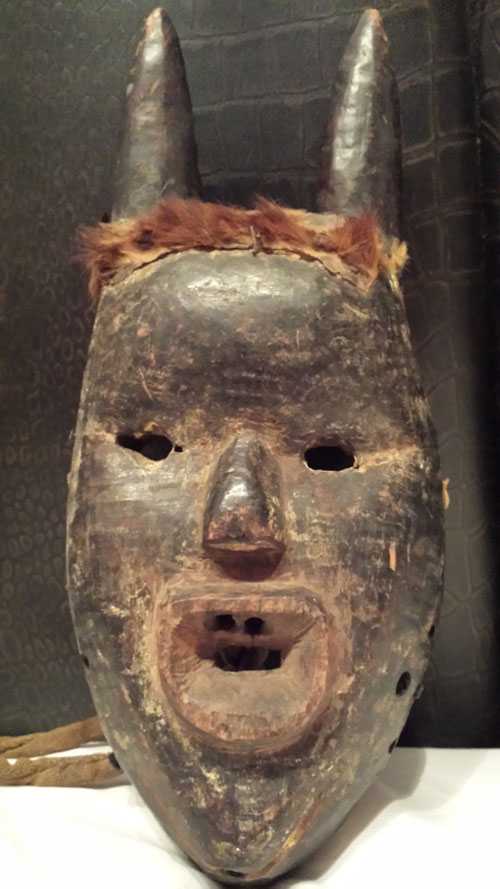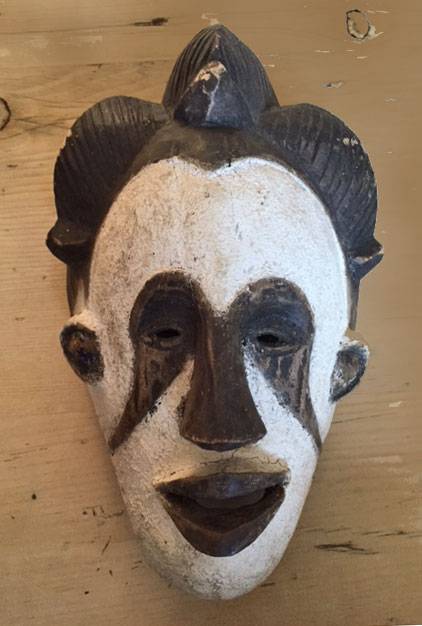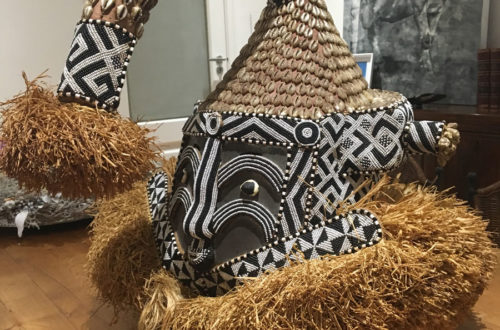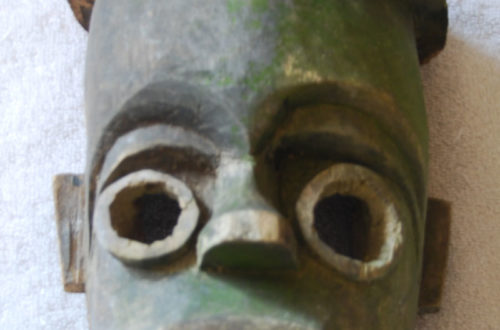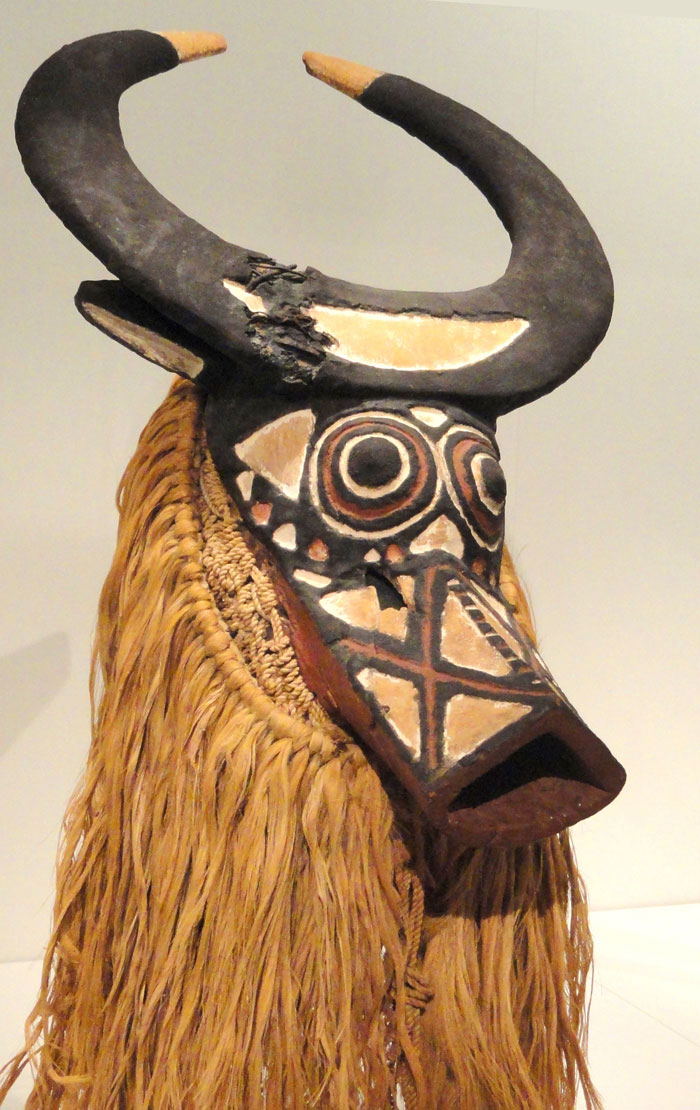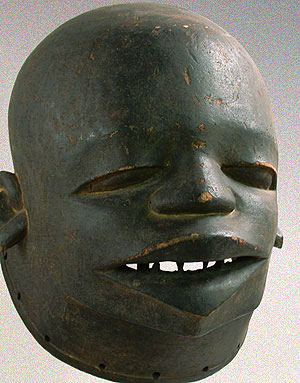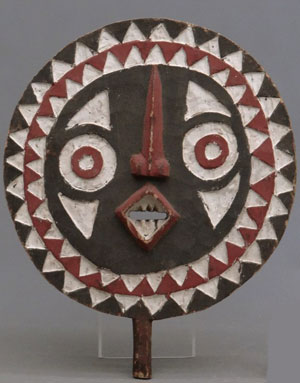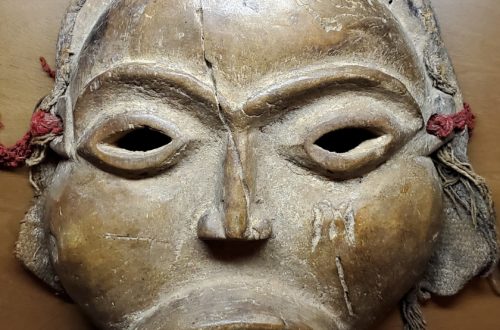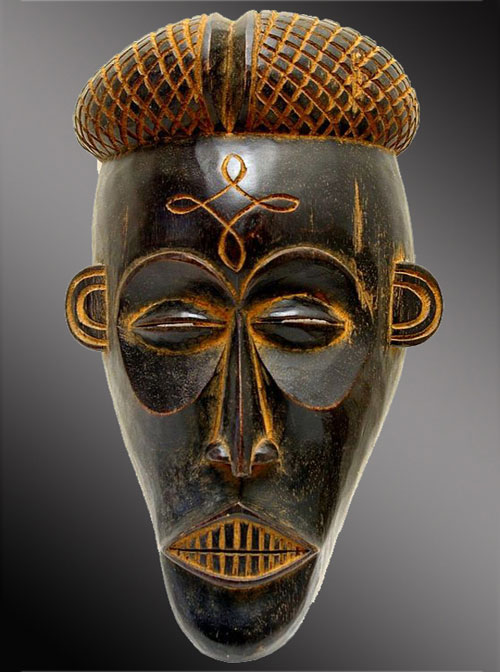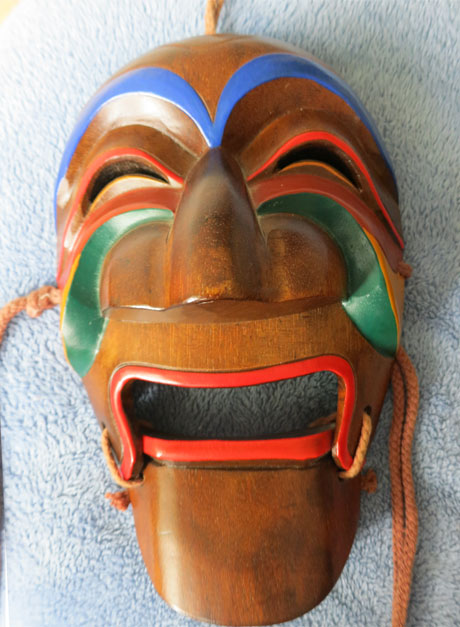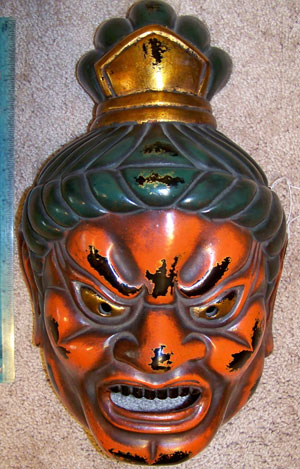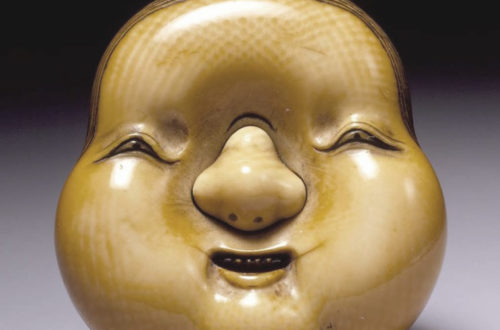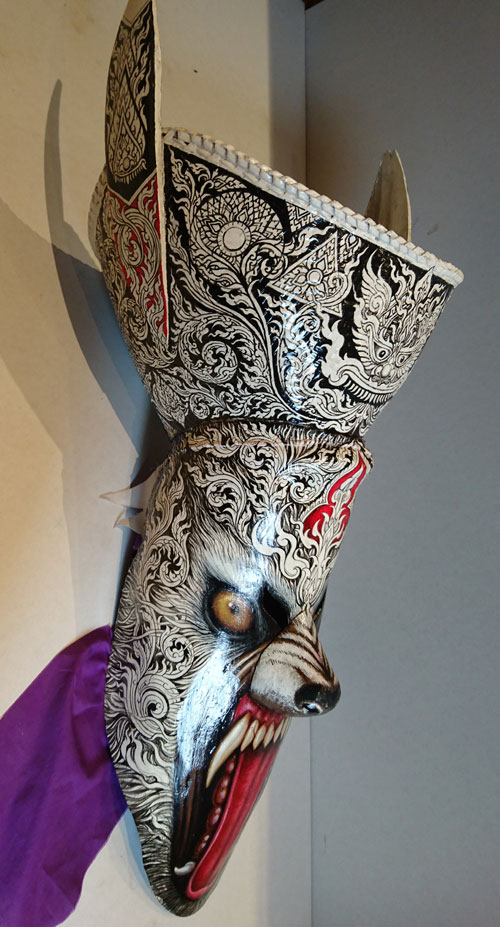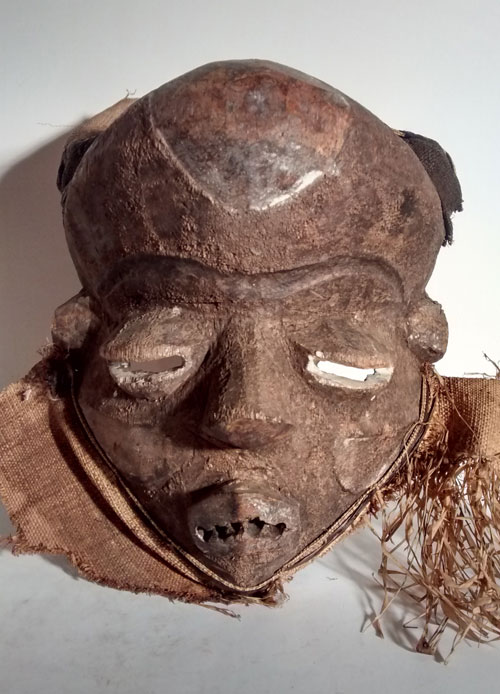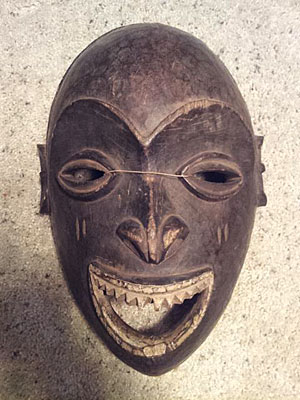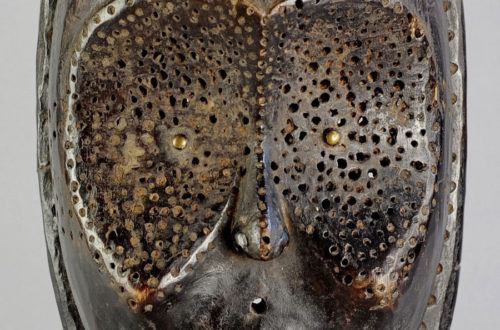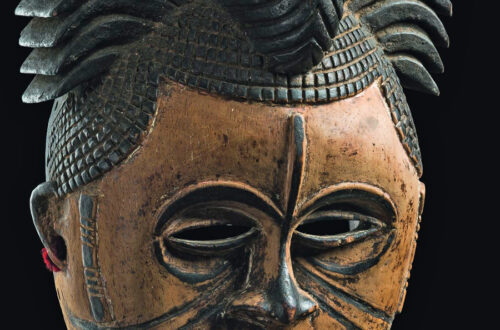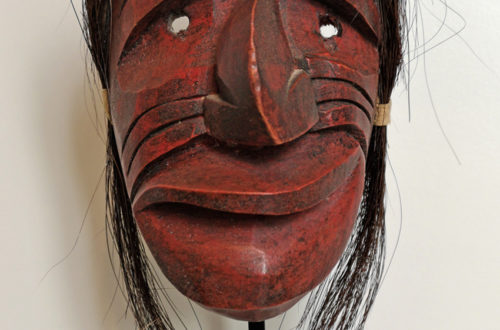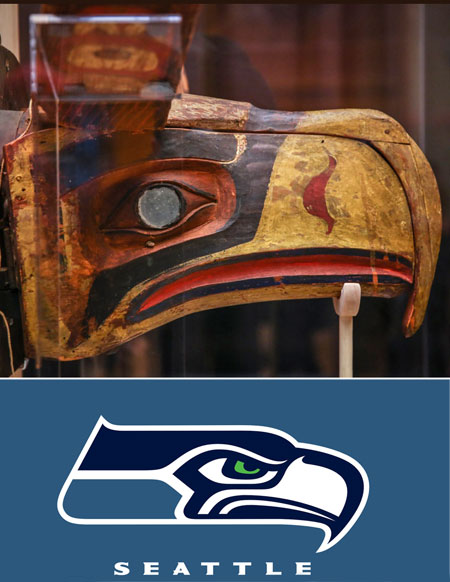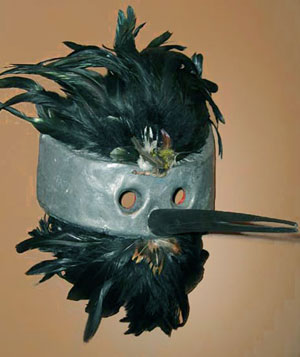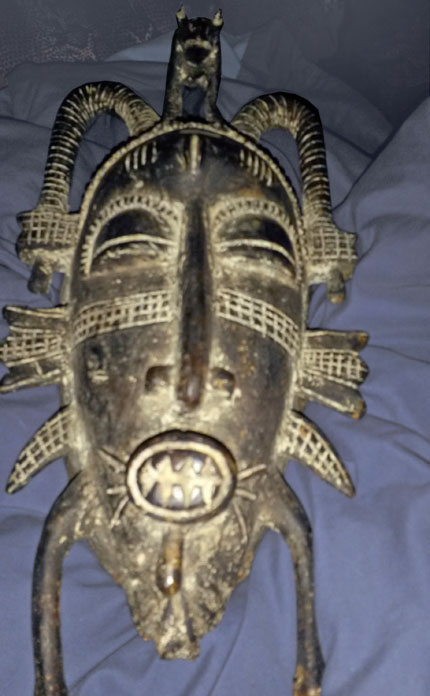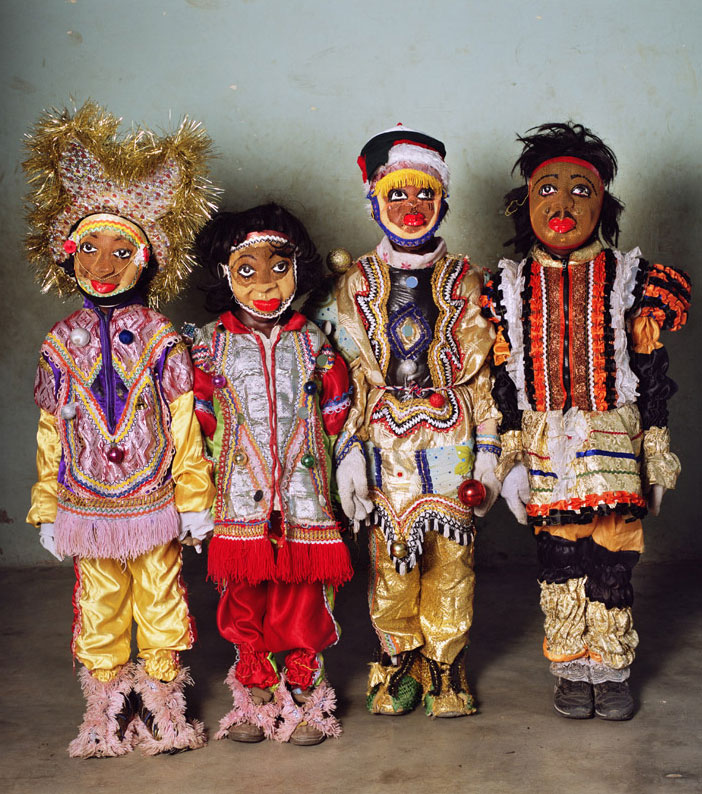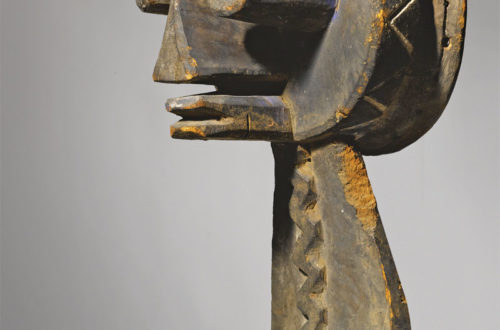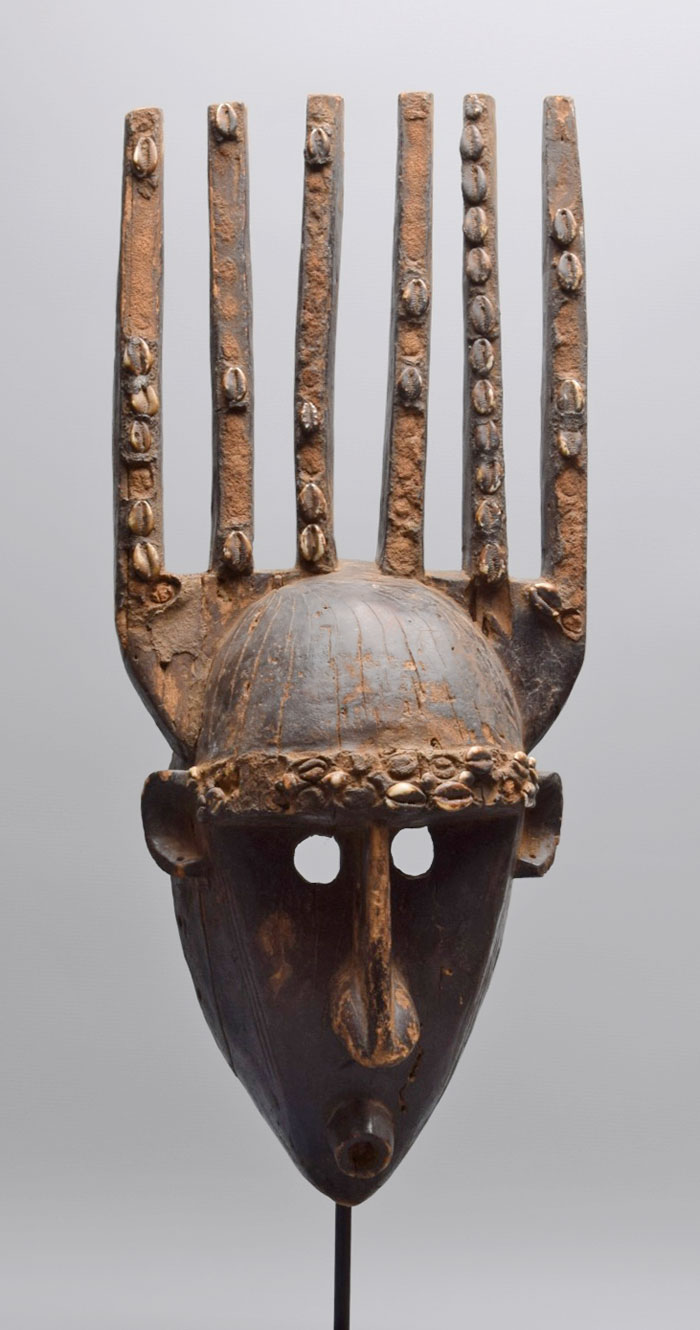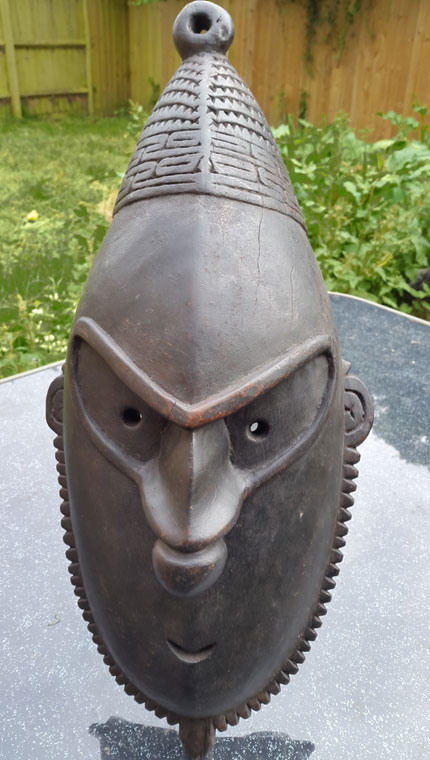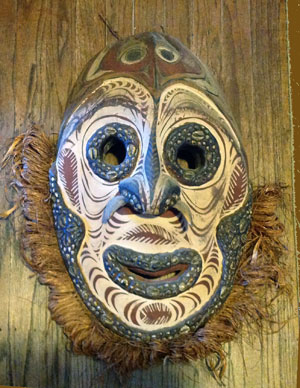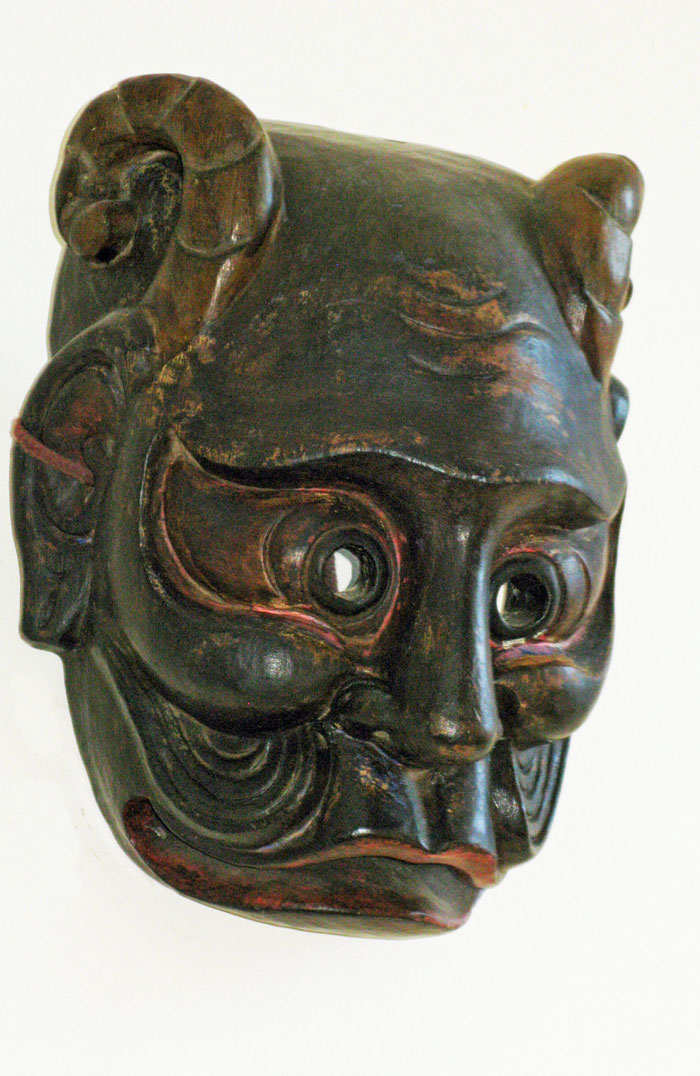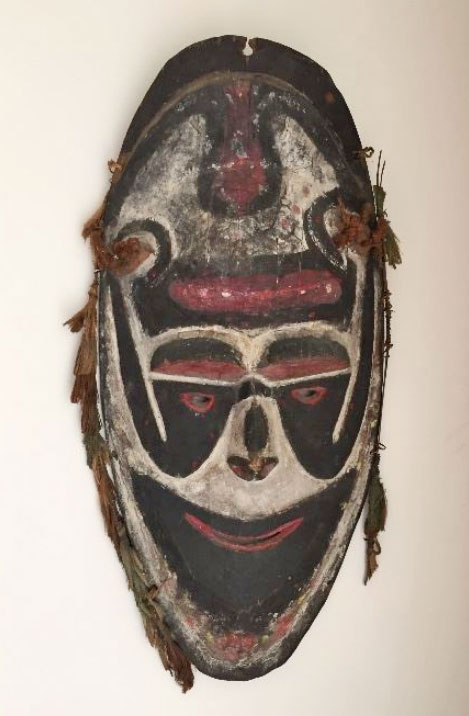Q: I cannot remember if I sent you the picture of this huge, Mexican (I think) mask. Attached is a photo with me. It has several holes on each side that could hold it to a man’s head. Jim, 792 A: This “mask” is very big, as everyone can tell by looking at you trying to hold it. Frankly, I have never heard of Mexican’s wearing masks this large at a festival. And there are no eye holes. I think it might have been ordered by a shop keeper or restaurant owner who wanted to attract tourists with an attention-getting carving to hang on the wall.
-
-
Hawaiian warrior’s mask
Q: The Hawaiian mask and rattle are a rare find, although obviously made in the last few years. I’ve been to Hawaii many times and never seen an authentic gourd war mask for sale. Aaron, 791 A: We are fortunate that Aaron shares his recent mask purchases with us. This is a very realistic reproduction of a Polynesian warrior’s helmet mask made out of gourd.
-
Female Kifwebe mask from the Songye
Q: I found this with a collection of 30 or so other masks at a yard sale. The seller said they were “very old” and had come from Sudan. Some of the other masks have a distinct smoke odor (but not this mask). Measures approximately 16.5″ x 13″ x 7″ Rebecca, 790 A: The grooved pattern on the face of the mask is a common characteristic of a female Kifwebe mask from the Songye tribe of the Democratic Republic of Congo.
-
Maiden Spirit mask from the Igbo
Q: I collect masks from countries I visit and have a small collection of 9 at the moment (and hopefully growing). However, my Nan volunteers at a British Heart Foundation shop and had a wooden mask bought in and has got it for me. I usually like to know where the masks are from. Would there be any way for me to find out where this one is from? Sophie, 789 A: That’s what we’re here for. Learning about the mask increases the pleasure of collecting.
-
Lipiko mask from the Makonde
The famous Lipiko mask from the Makonde people projects a kind of stylized realism that is unique in African masks. This is a plain one without scarification or applied hair, but with an especially strong and well executed form. From a purely sculptural standpoint, it doesn’t get much better than this. The mask, which slips completely over the dancers head and rests on the shoulders, is about 12 inches deep.
-
Especially colorful Hanhoe mask
Q: This Asian mask was given to me by a student about 15 years ago. She was Japanese-Korean and the bride of a Vietnamese soldier. That is about all I know. I am moving to Hawaii this Fall and am trying to downsize. Thank you for your assistance. Janis, 787 A: This is a Hanhoe mask from the Gyeongsangbuk province of South Korea.
-
Mbuya mask from the DRC
Q: I just acquired this mask at an estate sale. It is made of very lightweight wood and appears to be quite old. There is also a kind of fabric made from woven grass attached to the top and lower parts of the mask. The mask measures 11″ x 11″ (including fabric) or 7″ x 7″ (wooden part only) with a 5.5″ depth. Any information you can provide would be much appreciated. Simon, 786 A: The Pende are an important culture that has produced a wide range of masks and other sculptures.
-
NWC raven mask, sort of
Q: I have always been interested in African masks but thought this may be a Haida or Tlingit raven mask. I’m just guessing. Is it old or a reproduction? There is a name written inside. I’m not sure but it looks like “Rovea Tona.” Emily, 785 A: It is a reproduction of a Northwest Coast Indian raven mask as you said, but serious collectors prefer the masks made by Native American carvers.
-
Souvenirs vs. Traditional Art
Q: Another mask I found recently. I don’t know anything about it other than it is sand cast metal, I believe. Dee, 784 A: You can see a similar African mask that I posted Feb 8. Your mask is also called a Kpelie and comes from the Senufo people of Ivory Coast. These refined face masks represent women, are danced by men, and are usually associated with the Poro association. Called Beautiful Lady or Kpelie, they come with many variations, with rich and complex symbolism. At that time I went on to say, “Yours is especially nice. It’s designed very well and is carefully carved.”
-
Excellent mask from New Guinea
Q: I just bought this at auction but know nothing about it. Any ideas about it would be appreciated. I’m interested in starting a small collection of masks. Steve, 783 A: This would be an excellent start to a collection. It is a very well made example of an ancestor mask from the Lower Sepic River area of Papua New Guinea.
